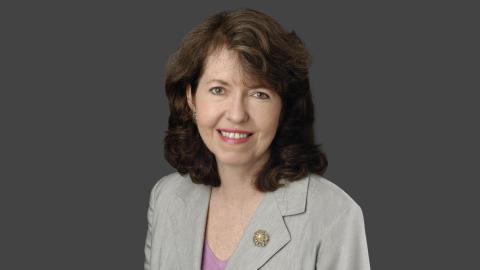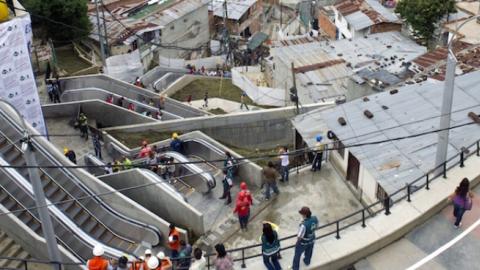We’ve just had an election that was in part about government competence in dealing with crises. Think ISIS, health care, Ebola. So perhaps it’s the perfect moment for a book that carries the subtitle “Being Strong in a World Where Things Go Wrong.”
The title of the book is “The Resilience Dividend,” a phrase coined by the author, Judith Rodin, who defines it as “the capacity to bounce back from a crisis, learn from it, and achieve revitalization.” Most of the examples she offers pertain to cities and governance, though she also discusses businesses overcoming unexpected challenges. She is especially worried about the problems created by urbanization, climate change and globalization, which she sees as the “three disruptive phenomena” of the 21st century.
Ms. Rodin is president of the Rockefeller Foundation, which runs a program called 100 Resilient Cities from which she draws a number of the examples she cites. She is also a psychologist with an academic background—she was president of the University of Pennsylvania—and her professor’s tendency to overanalyze gets a little tedious. But she is a good story teller, and her stories from the United States and around the world form the heart of the book.
The most compelling of them focus on success—that is, on positive examples of how communities have responded to “disruptions” such as severe weather, a terrorist attack or a health scare. In some cases, the disruptions grew into full-blown crises; in others, they were contained before they got worse. Either way, they provide models from which others can learn.
One is the example with which Ms. Rodin begins: the transformation of the city of Medellín, Columbia, into a thriving urban center and international tourist destination. Anyone who remembers Medellín from the 1980s and 1990s, when it was the drug and murder capital of South America, will understand just how impressive that city’s reinvention is.
There are many reasons for the revival of Medellín, above all the integrated nature of the effort, which involved government, businesses and NGOs. The revival entailed a lot of creative thinking, such as that which led to the construction of giant escalators up and down a hillside slum, making it possible for residents to connect easily with the city’s public transportation system and travel safely and quickly to jobs that had previously been inaccessible. The social and economic effect of the escalators was enormous.
Throughout “The Resilience Dividend,” Ms. Rodin pays particular attention to the influence that ordinary people can have in a crisis, especially in the early stages, when it may not be clear what has happened and the professionals haven’t had time to put a plan into place. In the minutes after Boston Marathon bombing last year, citizens rushed forward to help the injured. In New York City on 9/11, hundreds of privately owned boats carried thousands of stranded commuters off the island of Manhattan and across the Hudson River to New Jersey.
Ms. Rodin also emphasizes the importance of social cohesion. During the Chicago heat wave of 1995, when 739 people died, the city’s Auburn Gresham neighborhood had only a few deaths because neighbors checked in on one another and provided assistance to the vulnerable. People who “have worked or played together” and “belong to groups together,” she writes, are “more likely to come together to respond quickly and effectively to a crisis.”
“The Resilience Dividend” includes negative examples, too, such as the Bay Area’s poor planning before the 1989 Loma Prieta earthquake and Bay Bridge collapse and the aftermath of Hurricane Katrina in New Orleans, where so much went wrong. But even these examples carry constructive messages. The Loma Prieta quake was a wake-up call and was followed by “two decades of awareness building, assessment, and development of an action plan,” though the plan is still decades away from full enactment. The takeaway? “You cannot, and should not, expect to build resilience overnight.”
In New Orleans, an unexpected benefit of the hurricane’s damage was the city’s revamping of its failing public school system. Today 95% of New Orleans students attend charter schools; dropout rates and student performance have improved dramatically. In this age of Ebola, an unintentionally negative example in “The Resilience Dividend” comes courtesy of Dr. Tom Frieden, the head of the Centers for Disease Control, who is quoted on the subject of his agency’s supposed agility. Obviously, that one needs work.
A brief section on the 1917 explosion of a munitions ship in the harbor of Halifax, Nova Scotia, makes for fascinating reading, not least for underlining the human folly that can go into the making of a disaster. The crew abandoned ship, leaving the burning vessel to drift toward shore, where gawkers gathered to watch rather than fleeing the area. Some 2,000 people died in the subsequent blast, and 6,000 were injured; churches, factories and schools were destroyed. The Halifax tragedy illustrates three of the author’s principles of resilience-building: the need to be “aware” of possible threats; to possess a “diversity” of options; and to “adapt” to new circumstances as they emerge.
Crisis planners will find useful material in “The Resilience Dividend,” not just a “template for thinking” about crisis management but also, as Ms. Rodin puts it, the “methods for putting that thinking into practice.” The rest of us will take heart that, in a world of disruption, there are ways to cope with crisis and even, perhaps, grow stronger as a result.
















